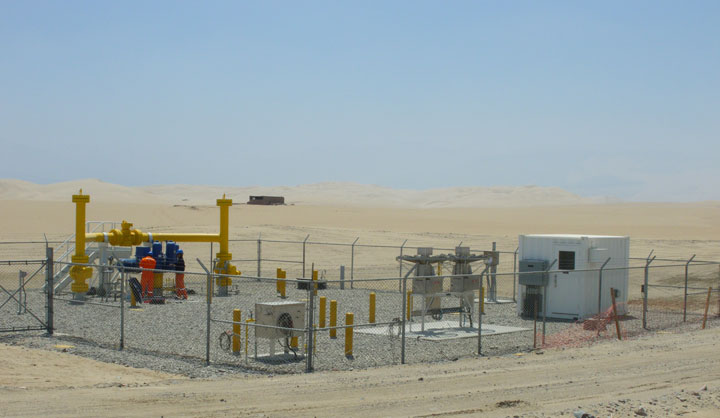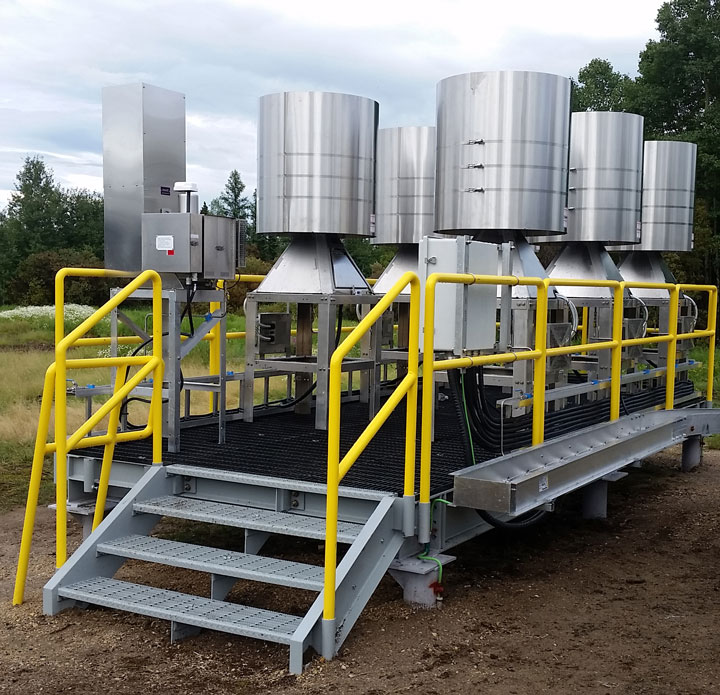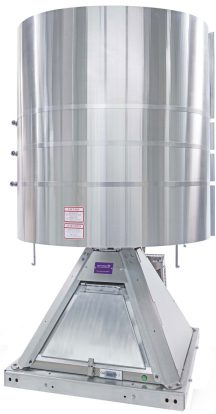Batteries no longer needed in remote gas projects
High temperatures in remote Australian gas operations are reducing the life of batteries and increasing maintenance costs. A solution is the use of Thermoelectric Generators (TEGs)*. This technology is used by NASA and has become a better option for reliable power generation in remote locations because TEGs don’t need batteries to operate.

In solar photovoltaic systems, batteries go through a cycle once a day; during the day they charge and at night they discharge. Each discharge cycle reduces the capacity of the battery and if installed in locations with very high temperatures – such as most Australian gas wells – this heat intensifies the corrosive effect and significantly reduces the life of the battery.
Not only does this mean more costly and frequent maintenance, but once the battery has exceeded its useful life it has to be retrieved and disposed of, which becomes more expensive the further away the operation is.
Dominic Pituch P.Eng. Sales Engineering Manager at Gentherm Global Power Technologies (GPT) said the full life cycle cost of batteries, including maintenance, disposal and replacement, is often overlooked.
“Due to their large size and cost, battery banks are often undersized to reduce capital costs resulting in lower reliability and significantly increased operational expenses,” Mr Pituch said.
“Batteries are also less efficient at low temperatures; even in hot desert climates, systems can be exposed to cold winter nights. In winter, daylight is at a minimum and temperatures are low, putting additional strain on the batteries.
“Depending upon the type of lead acid battery, these may have to be refilled with distilled water if they reach a temperature where ‘boiling’ of the battery electrolyte occurs, adding to maintenance costs.”
Considerations for remote operations
For gas projects in areas where grid power is unavailable, ICE gensets and photovoltaic technology have generally been used for power generation. While ICE gensets can be used as an intermittent power source, they have a short lifespan and high maintenance costs, meaning it’s not a good option for continuous operation.

When choosing a power source for remote gas projects in Australia, operators need to consider the operational expenses of maintaining that power source.
“For critical applications, the cost of system downtime is a major factor. Operation response time and labor costs are also equally important,” Mr Pituch said.
“In addition, a strategy for power availability and site access to remote locations during environmental emergencies like floods, fires and storms could impact operating expenses.
“Operators need to be using reliable, low maintenance power solutions.”
What’s the alternative to batteries?
While the remoteness of Australian gas field locations highlight the weaknesses of batteries in off-grid photovoltaic (PV) systems, the conditions are perfect for Thermoelectric Generators (TEGs), which are now a viable option for the Australian market.
Mr Pituch from GPT – one of the very few manufacturers of Thermoelectric Generators (TEGs) worldwide – said their TEGs supply DC power directly to system loads and, in applications like cathodic protection, do not require a battery to operate.
GPT’s thermoelectric technology was developed in the 1960s for the Apollo space program and continues to be used by NASA. In 1975 GPT commercialised the technology for use in terrestrial applications.
“The simple, solid state construction of the TEG lends itself to continuous long term unattended operation,” Mr Pituch said.
“This robust field-tested design provides greater than 99 percent power availability.”
GPT’s thermoelectric generators are constructed with no moving parts which allows them to operate in extreme climates and weather conditions. They work by converting combustion heat directly into electricity and only need preventative maintenance once a year to last their 20-year design life.
Thermoelectric Generators (TEGs) can also be paired with station batteries to keep them in continuous float charge, which can prolong the life of the battery by eliminating deep discharge cycles.
“The TEG’s electronics are designed to directly charge a battery bank and run continuously to supply the average system load and float charge the battery keeping it at full capacity,” Mr Pituch said.
“However, since the TEGs can provide reliable DC power without batteries, we typically only recommend the use of batteries with TEGs where critical loads, such as keeping a PLC online or a valve actuator powered, are necessary.”

Implementing Thermoelectric Generators (TEGs) in Australian operations
Wade Elofson, the founder of Powered, an Australian energy and resource-focused business development company, said that as Australian gas fields continue to develop, collector and transmission pipelines will need to be expanded, making Thermoelectric generator (TEG) applications a good fit.
“The Australian market is rapidly expanding, especially with the three major LNG plants on the east coast. Gas fields in the south-west will have to be continually developed to provide the gas, meaning more wellheads will be brought into production,” Mr Elofson said.
“The gas market in Australia has developed to a point where the use of TEGs is a viable option compared to other forms of remote power generation.
“The remoteness of field locations and the need for reliable power at the wellhead is a good fit for this kind of technology.”
*The term TEG has been the long established worldwide acronym for Thermoelectric Generators for 50 years, in over 55 countries. It shouldn’t be confused with the “TEG” term used to refer to triethylene glycol in Australia.


